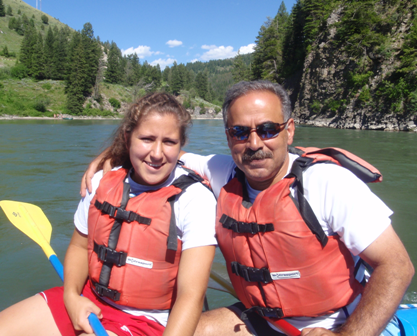Akbar Mehrsheikh
Chemistry Alumni
I received a PhD. degree in organic chemistry at the University of Wyoming in 1984 under the supervision of Professor Edward Clennan. I joined Monsanto Company in 1987 as a senior research chemist after completing two sequential post-doctoral appointments at the University of Notre Dame (1984-1986) and the University of Illinois at Champaign-Urbana (1986-1987). In my first assignment at Monsanto I was responsible for the syntheses of candidate herbicides and metabolites, incorporating stable isotopes and carbon- 14 radioisotope. Soon I joined Monsanto Environmental Sciences Technology Center in St. Louis to support global regulatory approvals and product stewardship efforts for Monsanto’s crop protection and biotechnology products. Currently, I lead the “Fate and Metabolism” team at Monsanto which consists of up to eight senior and junior scientists. The team is responsible to determine the metabolic fate and environmental fate and behavior of crop protection chemicals in soil, water, plant and animals. These data are needed to support the registration of new products, expand the registered uses of current products, maintain existing registrations, and support the use of these products globally. Before a herbicide can be registered for use, it must undergo rigorous studies to determine what happens to the compound after it is released into the environment, either from an intended use or an accidental release, such as a spill. These studies, referred to as “environmental fate” and “metabolism” studies are reviewed by the U.S. Environmental Protection Agency (EPA) and regulators in other world areas and are designed to provide answers to the following questions. What is the fate of a pesticide in animals and plants? Does the product degrade after application? If so, what degradation products are formed in crops and in the environment? Does it persist in soil or have residual herbicidal activity in soil? Does it persist in water or sediment and leach through soil to reach groundwater or contaminate surface water and drinking water? Key regulatory studies my team is responsible for are: plant metabolism, rat metabolism, livestock metabolism (goat, chicken), ADME or Adsorption, Distribution, Metabolism and Excretion studies (rats, mice, primates), aerobic/anaerobic soil metabolism (rate and route of degradation), soil movement, soil adsorption/desorption, column leaching, hydrolysis, and photolysis studies.


